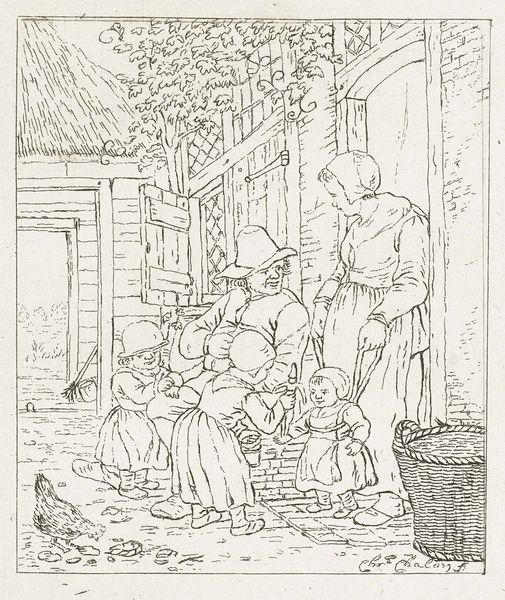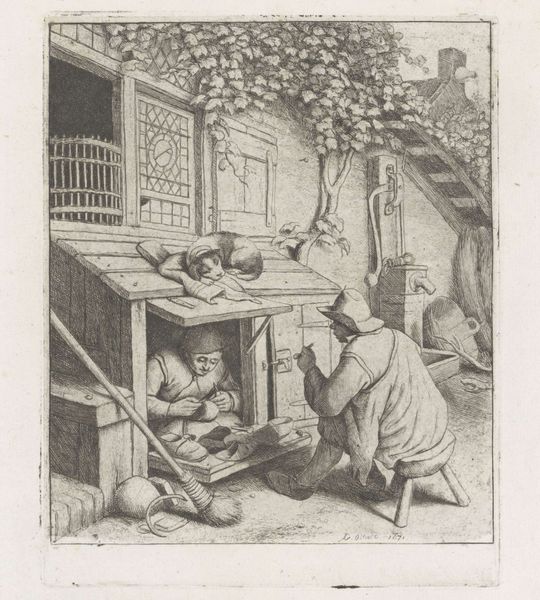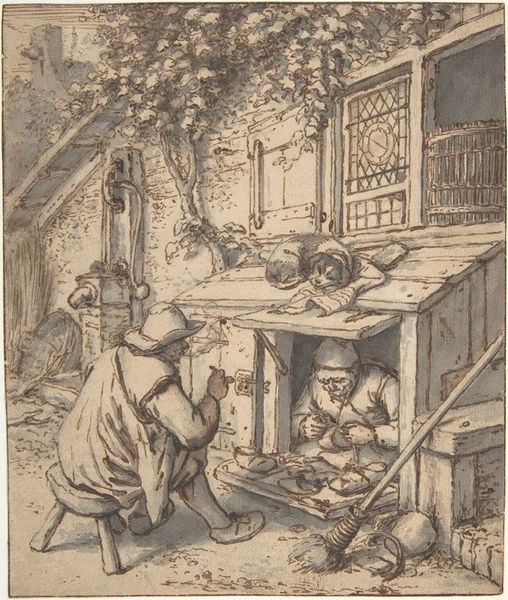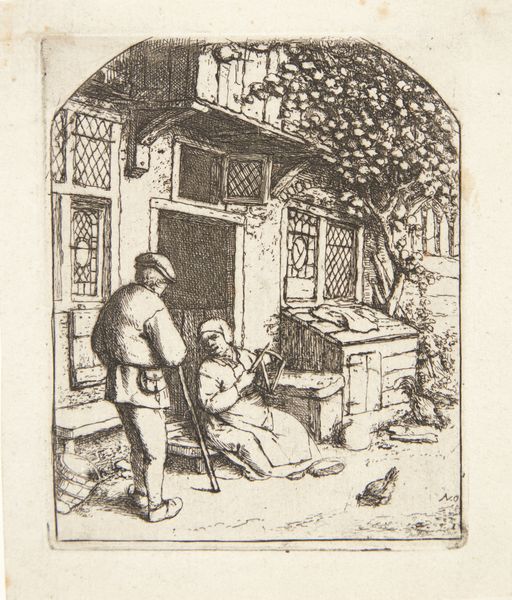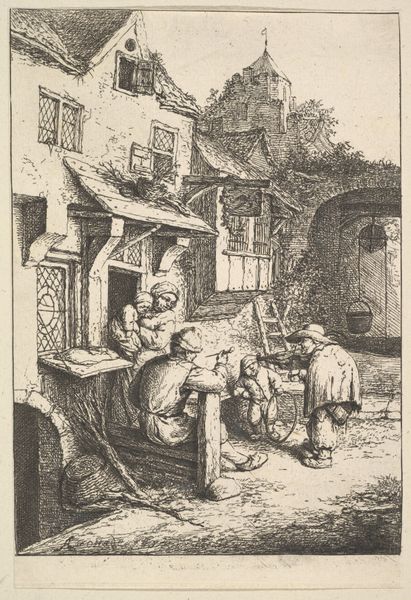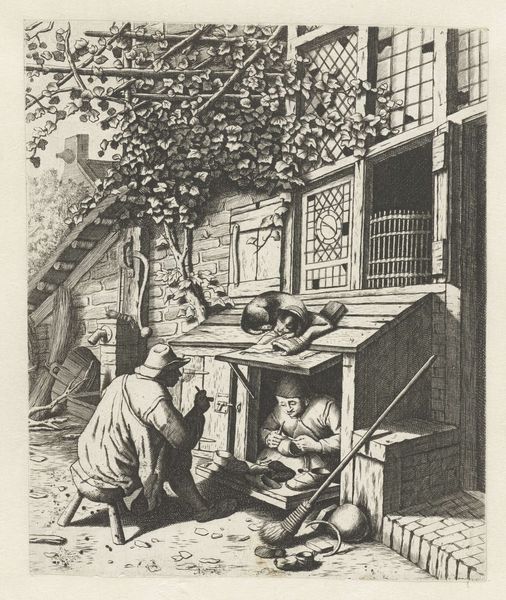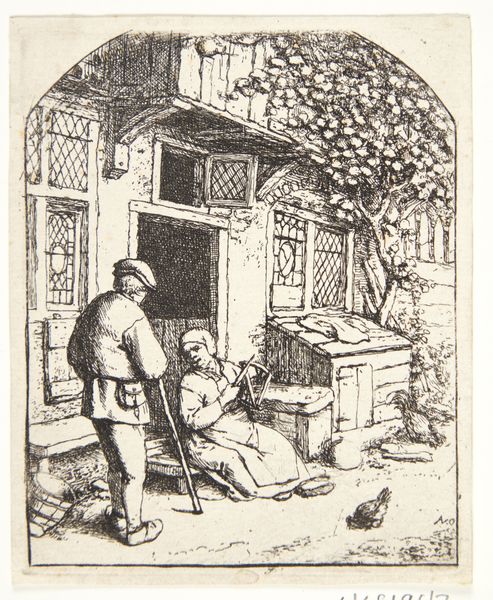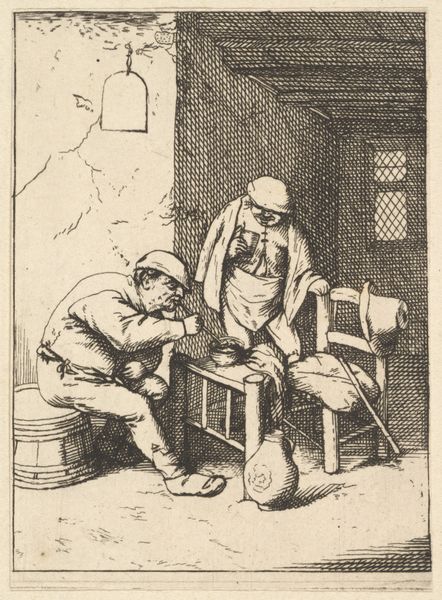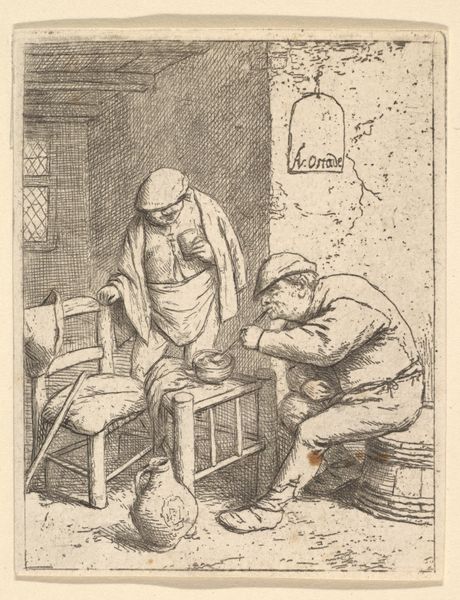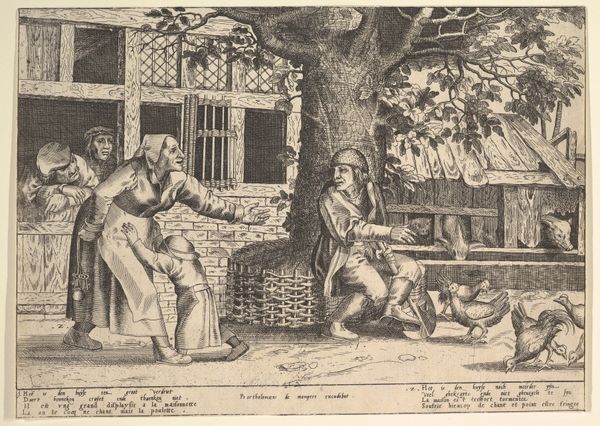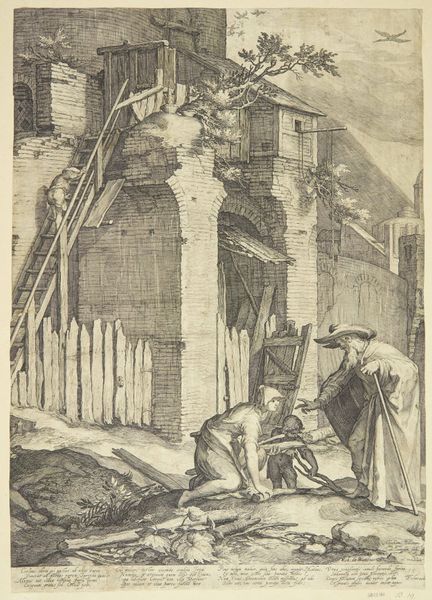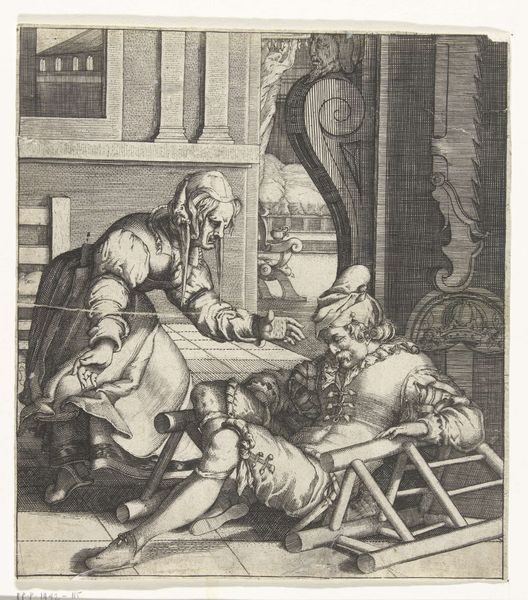
drawing, print, etching
#
drawing
#
pen drawing
#
dutch-golden-age
# print
#
etching
#
landscape
#
genre-painting
Dimensions: Sheet: 3 15/16 × 3 1/4 in. (10 × 8.3 cm)
Copyright: Public Domain
Editor: Here we have Adriaen van Ostade’s etching, "The Winder," likely created sometime between 1610 and 1685. It's quite a detailed scene for such a small print. What strikes me most is how ordinary it seems. How would you interpret this work? Curator: Ostade's choice of such everyday imagery speaks volumes. What appears "ordinary" to our eyes was likely a carefully constructed reflection of peasant life, imbued with symbolic meaning. Consider the woman winding yarn; the act itself can represent fate, the spinning of life’s thread, echoing classical allegories, while simultaneously depicting a domestic chore. Editor: So, it’s more than just a snapshot? What about the other elements? Curator: Exactly! Note the standing figure with the cane; he carries the weight of labor but is perhaps also a watchful guardian. And what do you make of the building behind them? The texture… Editor: It almost looks like it’s collapsing. Uneven. Is that a hint at their social standing? Curator: Precisely. These aren’t simply random details. They reflect prevailing social hierarchies, but also perhaps a sense of moral order—or disorder. Etching allowed for the dissemination of these symbolic representations to a wider audience. Consider what this imagery might have meant to different viewers then, and what persists today. Editor: It's interesting how a seemingly simple scene holds so much cultural information. It makes you wonder what we miss at first glance in other works. Curator: Indeed. Each element serves as a signpost, inviting us to decipher its place within a broader cultural narrative. Looking closer allows us to see across time, recognizing echoes of our shared past.
Comments
No comments
Be the first to comment and join the conversation on the ultimate creative platform.
